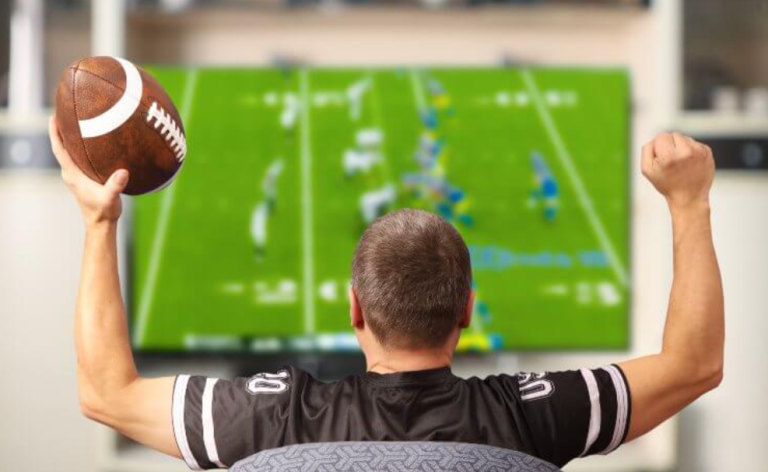Importance of player form and injuries in sports betting
Conditioning, rhythm, and health status steer the contest, yielding edges—or mistakes—at the window. This guide explains how to read form and interpret injury news, illustrates how injuries affect betting odds in real time, and combines those insights with numbers used by pros in the US market. The goal is practical: turn better evaluations of athletes into more accurate decisions and disciplined bankroll growth. In regulated US states, you must also account for reporting lags and legal cutoffs that can affect when news becomes actionable.
Why player form and injuries critically impact betting outcomes in the US 🏋️
US markets are liquid, lines move quickly, and sportsbooks adjust fast to confirmed lineup changes. Recent performance trajectory and injuries change usage, shot quality, pace, and team roles, which shifts projections and wagering value. Bettors who recognize those shifts before the price fully updates are the ones who grab favorable numbers. That edge is vital for totals, athlete-focused props, and spreads whenever clubs depend on one or two high-leverage difference-makers.
- ✅ State regulations vary; bet only where online sports wagering is legal and you are 21+.
- ✅ Treat news cycles as real-time markets; the injury desk often sets the day’s edges.
The importance of tracking athlete form and fitness before placing bets 📈

Consistent data review keeps you ahead of stale narratives. Current performance cues drive individual props; team trends guide totals and moneylines. Track minutes, touches, and shot quality, then overlay recent injury history to understand role stability and conditioning. A structured routine cuts bias—if the checklist flags a ramp-up after rest, you won’t overreact to one off night.
3-step pre-bet micro check
- Workload: minutes/snap share trend versus season baseline.
- Efficiency: rolling TS%, EPA/play, xG, or wOBA shifts.
- Context: opponent scheme, travel, and coaching quotes.
To deepen this, study player form in sports betting.
How player form impacts betting outcomes 📊
A surging contributor reshapes defensive responses and teammate roles, forcing model adjustments. When you quantify recent performance and role, you can better price player form and betting odds.
Market-by-market implications
Sides: role consolidation can stabilize late-game offense, improving cover probability.
Totals: tempo rises when confident ball-handlers push pace; efficiency spikes change totals more than pace alone.
Props: small usage upticks or shot-quality upgrades often matter more than headline points per game.
Short-term vs long-term form ⏱️
Short-term form (last 3–7 games or 1–3 weeks) captures momentum, workload spikes, and minor knocks. Long-term form (6–8 weeks or season-to-date) smooths volatility and reveals stable talent. Balancing both prevents recency bias while still catching role changes. Study short-term vs long-term form analysis to align horizons with your bet type.
✅ when short-term form matters
- Player props with recent role shifts.
- Back-to-back fatigue or travel spots.
- Return-from-injury ramp-ups.
✅ when long-term form matters
- Futures and season win totals.
- Structural team metrics like half-court efficiency.
- Players with historically stable usage.
A guard bumps from 30 to 34 minutes and shifts two more attempts to the restricted area; despite a modest season TS%, the short-term finishing uptick and role change are actionable for tonight’s prop.
Player momentum and confidence 🔥
Confidence shows up in early-clock attempts, tight-window throws, or aggressive drives to the rim. It also manifests in body language and coach quotes about green lights or scripted touches. One hot stretch can turn a neutral projection into a positive expected value when the price hasn’t caught up. Learn about momentum and confidence in betting to quantify this edge.
Signals to log
- Shot selection: more rim attempts or open threes, fewer long twos.
- Coach language: “green light,” “featured,” “ramp-up complete.”
- Teammate roles: secondary creators get easier looks when a leader draws two defenders.
Without a quality change (shot diet or play-calling), streaks tend to mean-revert quickly.
Form metrics bettors should track 📋
Track minutes or snap share, usage rate, true shooting, expected points added, shot quality, target share, carry share, rush yards over expected, and on/off splits. For NHL, follow expected goals and high-danger chances; for MLB, rolling wOBA, hard-hit%, and chase rates. Integrate rest days and travel to reflect fatigue.
Data hygiene checklist
- ✅ Use rolling windows (7–10 games) plus season baselines.
- ✅ Normalize for opponent strength and pace.
- ✅ Note lineup stability—form without stable role is fragile.
- ❌ Don’t extrapolate from overtime-inflated minutes.
- ❌ Don’t ignore travel clusters that depress efficiency.
Comparing Recent Form of Key Players 📋
| Player & league | Last 5 games: core stat | TS% / passer rating | Minutes / snap% | Usage / target share | On/Off Net | Notes |
| Guard A (NBA) | 24.6 PPG | 62.5% TS | 35.8 | 29.3% | +8.1 | Conditioning trending up after ankle rest |
| Forward B (NBA) | 18.2 PPG | 57.1% TS | 32.1 | 23.8% | +3.4 | Defensive workload rising, slight fatigue risk |
| RB C (NFL) | 21.0 touches | 96.4 rating | 68% snaps | 27% touches | +4.9 | Goal-line role solidified, mild groin maintenance |
| WR D (NFL) | 8.0 targets | — | 74% snaps | 25% | +2.3 | Deep routes added, volatility moderate |
| C E (NHL) | 0.92 PPG | — | 19:45 TOI | — | +6.0 | More PP1 minutes, travel heavy next week |
| SP F (MLB) | 2.98 ERA | — | 6.2 IP avg | — | — | Slider whiff% up, pitch count rising |
Use this framework to build projections for props and adjust team totals. Then keep tracking player performance metrics daily to avoid stale edges. When a data point disagrees with film or quotes, investigate before you wager.
The role of injuries in betting decisions 🏥
Injuries reshape rotations, play-calling, and defensive schemes. Understanding how do injuries work in sports betting helps you anticipate role replacements and pricing shifts. Learn how injury updates move the lines so you can anticipate likely shifts after status changes. A practical approach is to map each on-field contributor to a backup and pre-price the impact on usage, pace, and defensive responsibilities so you aren’t starting from zero when news breaks.
Study the impact of injuries on betting odds to quantify the adjustment needed when a starter sits.
Types of injuries and recovery times ⚠️
Soft-tissue strains (hamstring, groin, calf) often lead to snap count limits and re-injury risk within two weeks of return. Contact injuries (contusions, sprains) are unpredictable but can be managed with bracing and pain tolerance. Overuse injuries (back, tendinitis) reduce efficiency despite minutes. Concussions require protocol clearance that can swing availability on short notice. Weather and travel can aggravate minor issues, especially short rest with long flights.
Status tag realities
- Probable: usually plays; monitor for light minutes in first game back.
- Questionable: true coin flip; have both projections ready.
- Doubtful: assume out, but prepare contingency if activated.
- Game-time decision: confirm at official warmups; consider waiting unless your edge is large.
✅ good practice
- Track participation reports and credible beat writers.
- Log each player’s conditioning notes after returns.
- Flag travel-heavy stretches for relapse risk.
❌ avoid
- Betting early without contingency plans for questionable tags.
- Ignoring role impact on backups and scheme changes.
- Assuming full minutes at first game back.
Play smart, choose favorable odds and increase your winnings with BetWhale! 📈
Essential news sources
- Rely on official league injury updates to validate status.
- Build a routine for injury reports for bettors so you move before major line shifts.
- Consider recovery time impact on teams when a star returns and teammates’ roles normalize gradually.
Combining player form and injuries with advanced metrics 📊
Blending health, role, and analytics produces sharper projections than narrative alone. This is where you can create separation and properly price player form and betting odds. Start by defining a base talent model, then apply health and role modifiers to minutes/snap shares, and finally translate possession share and efficiency into expected stat lines.
Integrating PER, TS%, and usage rate with player form 🏀
- PER summarizes box score impact but can mask defensive value; use it to screen for baseline productivity.
- TS% reflects scoring efficiency by weighting free throws and threes; combine with shot diet changes after injuries.
- Usage rate captures possession share; pair it with minutes and fatigue to estimate touch volume.
Estimate expected points: (minutes × usage × team possessions × shot-value × TS%), then sanity-check against matchup tendencies. If the shot profile downgrades against a switching defense, trim expectation even if the raw usage rises. To broaden your toolkit, review sports analytics platforms USA that provide rolling dashboards.
Don’t wait for tomorrow – place a bet today and prove that you are on the wave with BetWhale! 🔥
Predictive models for betting based on player health 🤖
Start with a baseline athlete-impact model, then add health tags: “probable,” “questionable,” “returning on minutes limit,” or “back-to-back fatigue.” Apply priors for each tag’s effect on minutes and efficiency, then simulate outcomes. For NFL, tie snap shares to personnel groupings; for NBA, map usage redistribution when a 28%-usage star sits. Add weather and travel to capture external variance. Explore weather impact on player performance to refine totals and rushing or passing props.
Modeling checklist
- ✅ Encode status tags as numeric penalties or caps.
- ✅ Use opponent-adjusted possession or play-rate baselines.
- ✅ Backtest on last season’s news events to calibrate priors.
- 💡 Keep a holdout set for honest validation and avoid overfitting.
Common mistakes bettors make regarding player form ⚠️
Bettors often overweight one hot game or ignore post-injury conditioning. Others chase a headline but miss the mechanics: who absorbs the minutes and touches. Build guardrails that force a check of role, efficiency, and context before any wager. Another frequent error is neglecting pace when projecting props—if usage rises but possessions drop, the projection can still go under.
Typical Mistakes and How to Avoid Them 📋
| Mistake | Why it hurts | Quick fix | Example |
| Only reading status tags | “Active” ≠ full workload | Verify minutes/snap projection | NBA star “available” but capped at 24 minutes |
| Chasing one hot night | Recency bias inflates price | Use rolling 10–15 game form | WR spike week vs poor secondary not repeatable |
| Ignoring defense changes | Opponents adjust to hot player | Check matchups/scheme notes | Trap coverage reduces deep targets |
| Overlooking travel | Fatigue cuts efficiency | Add rest/travel to model | 4 games in 6 nights spot |
| No backup mapping | Mispricing role changes | Pre-map depth chart usage | Backup PG = +4% usage to starting SG |
| Not planning CLV | Late news crushes price | Bet early with buyout rules | Prop line moves from 22.5 to 24.5 |
After you correct these, you can better align your read on player form and betting odds with market timing.
Tools and apps to monitor player health and performance 🛠️
Use depth chart trackers, lineup alerts, and mobile push from reputable sources to stay ahead. Pair that with model spreadsheets and API data for minutes, routes, or expected goals. Some sportsbooks with integrated player stats make it easier to cross-reference prices with recent performance. Build redundancy: two alerts per team you regularly bet, so you’re not dependent on a single source during peak windows.
For sustained consistency, rely on sports analytics platforms USA that stream near real-time updates and contextual metrics.
Combining manual and automated analysis 📊
- Collect: Pull rolling form splits and practice reports.
- Tag: Mark each player’s health status and expected workload.
- Project: Translate tags into minutes/snap shares and usage.
- Simulate: Run Monte Carlo on props and totals.
- Compare: Check book lines, seek mispriced numbers.
- Act: Bet at numbers that beat your projection by a pre-set edge.
- Review: Post-game, update form and role notes for the next slate.
Calibration tip: revisit key priors weekly; adjust the impact of rest days, travel, and ramp-ups based on logged outcomes.
Daily Pre-Bet Player Health Review 📋
- Check morning participation and practice statuses.
- Confirm any new limitations or ramp-up plans.
- Update projected minutes/snap shares and usage.
- Re-price props and totals after the last news cycle.
- Set alerts for final status 60–90 minutes pre-start.
- Record outcomes and adjust priors for future slates.
- Verify weather for outdoor games and pace-sensitive matchups.
- Re-scan depth charts for late scratches and two-way activations.
🎰 BetWhale slot snapshot (RTP & stakes in USD)
- Game: Wave Rider (BetWhale exclusive).
- RTP: 96.7% measured over long-run play.
- Volatility: Medium-high, suited to moderate bankrolls.
- Reels/ways: 5×3, 243 ways.
- Minimum bet: $0.10.
- Maximum bet: $50.00.
- Bonus feature frequency: approx. 1 in 140 spins.
- Use 200–300× the minimum bet for variance absorption.
This slot information is provided so you can compare house-edge products with sports holds, which reinforces value discipline for all wagering at BetWhale.
Real-life betting examples influenced by player form and injuries 🏆
Case study 1 — NBA guard on a minute ramp:
A lead guard returns from a hamstring strain with a 22-minute cap. The market prices his points prop near his season average, ignoring the hard limit. Sticking to the cap projection and slightly lower TS% leads to an under that closes two points lower, capturing closing line value. When the cap moves to 26 the next game, the under disappears—your log helps you stand aside rather than chase.
Case study 2 — NFL WR with target consolidation:
A starting WR becomes the primary read after a teammate’s ankle sprain. Beat reports confirm more intermediate routes, and target share jumps from 18% to 25%. Books move slowly, leaving a window for receptions and yards overs before the number adjusts. When the injured teammate returns, your projections gradually taper target share over two weeks instead of snapping back immediately.
Case study 3 — NHL center with travel fatigue:
A top-line center hits a four-games-in-six-nights stretch with cross-country travel. Ice time holds, but high-danger chance rate drops. Totals adjusted downward outperform neutral projections, aided by goalie confirmation. The following homestand restores shot quality, and the adjustment is reversed.
Case study 4 — MLB starter with pitch-count growth:
A pitcher returns from IL with a 60-pitch limit, then 75, then 85 over consecutive starts. Books lag on strikeout lines as slider usage and whiff% climb. Scaling the projection with workload saves avoids an overbet in the first start and nails the third. Logging pitch mix changes prevents you from using outdated baselines.
Key takeaways for smarter bets 🏅
- Prioritize workload over status tags; “active” is not a projection.
- Treat short-term spikes as signals only when role and shot quality also change.
- Bake travel, rest, and weather into efficiency, especially for totals.
- Document every change so you react faster next time.
- Track closing line value to verify that your process consistently beats the number.
Player health as a betting edge 🎯
Sustained profit comes from repeating small advantages: faster news digestion, smarter minutes assumptions, and price shopping. Organize your routine around pre-game checkpoints, protect your bankroll with unit sizing, and always verify the last wave of information. That discipline is how you accurately align player form and betting odds with your staking plan. Over a season, modest improvements—half a point of CLV here, a few percentage points of better prop pricing there—compound into meaningful results.
FAQ
How do injuries affect betting odds in the NFL and NCAA?
QB or star changes move spreads and totals fast; props react fastest—being early is the edge.
What metrics best indicate a player’s current form?
NBA: minutes, usage, TS%, on/off; NFL: snap and target/carry shares, routes; NHL: time on ice, xG; MLB: rolling wOBA, hard-hit%, chase rate.
Where can I find reliable real-time injury updates?
Official team/league reports, practice notes, and trusted beat reporters with pregame alerts.
How should I adjust my bets if a key player is injured?
Reassign workload, downgrade efficiency, re-price pace/totals, and reduce stake for higher variance.
Can recent player form outweigh historical performance in predictions?
Yes—when role or health shifts usage and shot quality; lean short-term for props, keep long-term as baseline.









